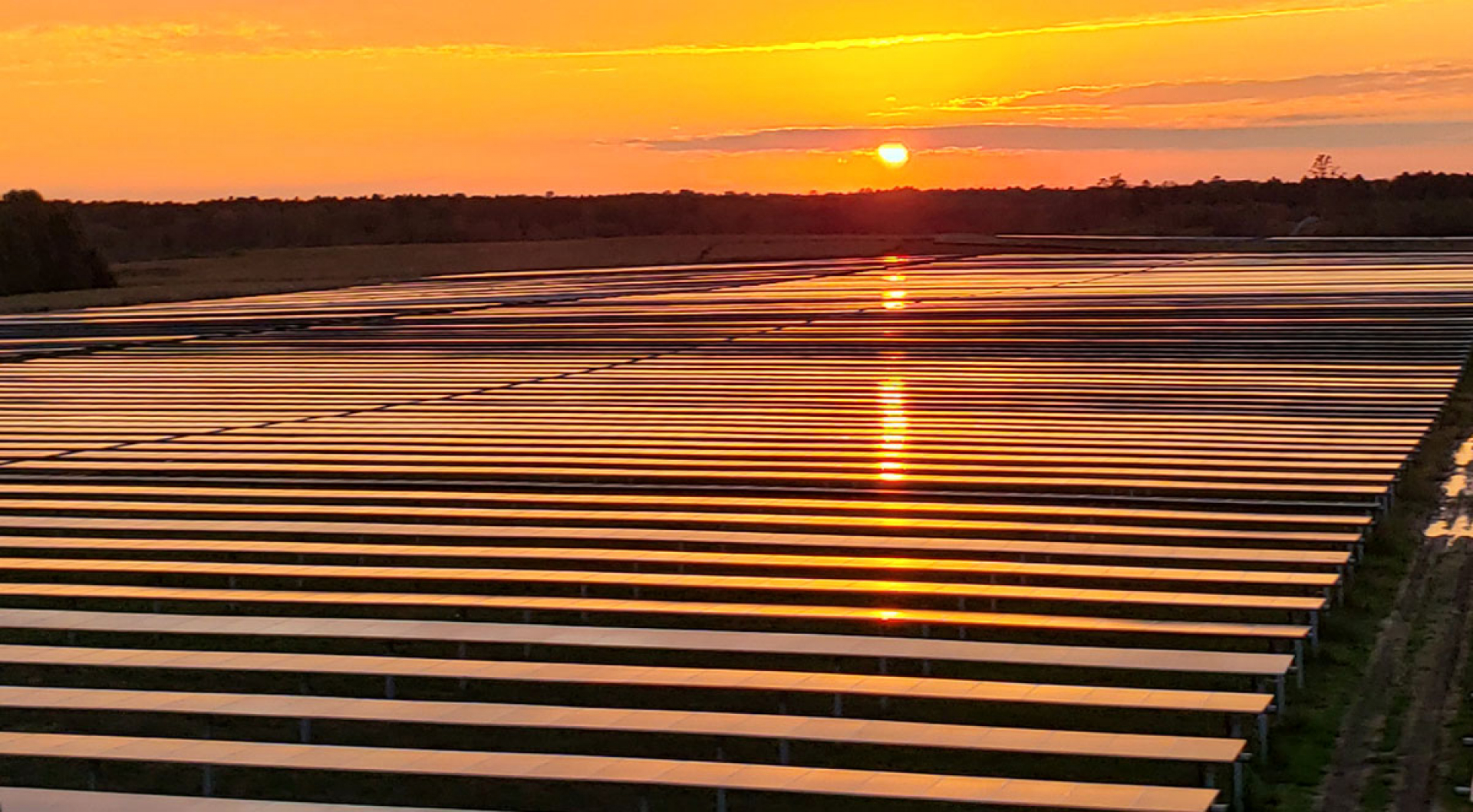There are two types of solar systems that can be installed in a farm: static systems and tracking systems. A static system keeps the panels in one static position throughout the day, while tracking systems follow the pattern of the sun throughout the day to get the most sunlight exposure.
Regardless of the system in place, solar farms generally all work the same way:
- The solar panels are mounted on racking devices that keep them off the ground and provide room for cables underneath.
- Each panel is made up of layers of silicon solar cells. The sunlight penetrates through these layers to create a reaction.
- When the positively charged silicon cells react with the negatively charged silicon cells, they expel an electron, which is then collected by the outer conductive plate.
- From the outer conductive plate, the electrons travel through wiring to a combiner box and then to an inverter.
- Inverter systems convert the solar energy into the form of electricity that is used in our power grid.
- Then through medium voltage cables, the energy is transferred to substations. This is where the power can be released into the power grid.
Here at STG Solar, we specialize in constructing these utility scale solar farms. We do mechanical installations of racking systems, electrical installations of combiner boxes and converters, medium voltage installations, and fiber optic installations! You can trust us to know our way around a solar farm!
